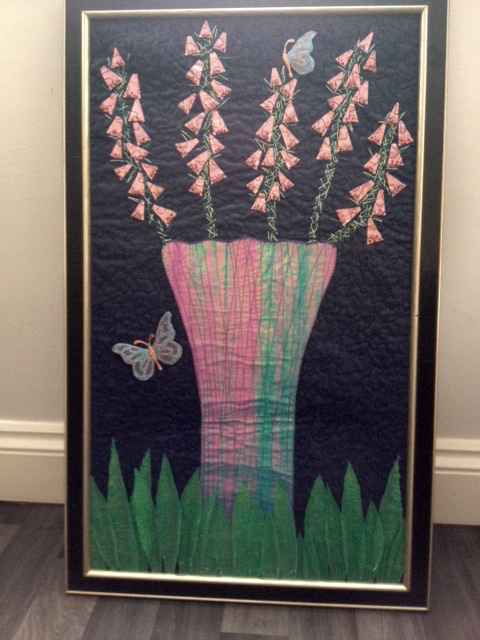
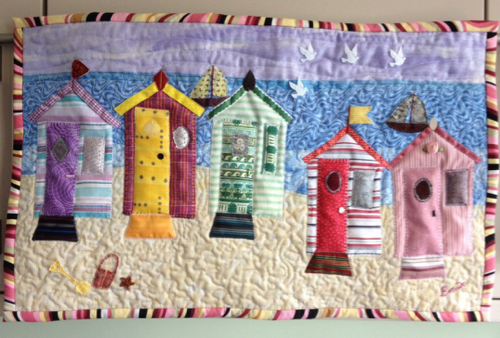
My first serious forrays into textile art were a foxglove picture using transfer foil inherited from a deceased member of my art group and a wall hanging depicting beach huts.
 |
 |
| 'Foxgloves for Ed' with transfer foil, shiny fabrics and beads. | 'Beach Huts'. Cotton fabrics and a few found items with machine aplique and conventional free motion quilting. |
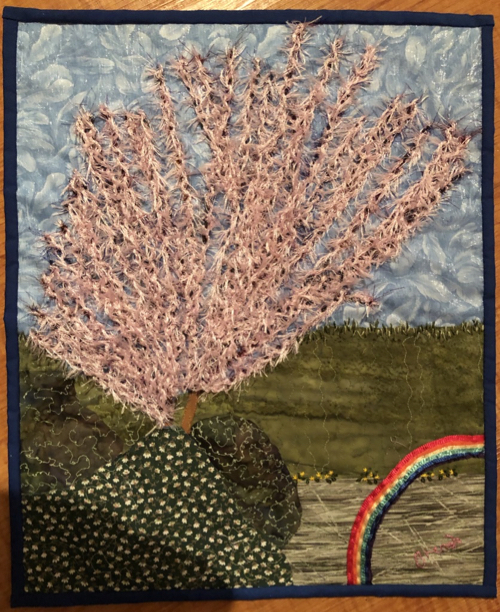
Shortly before the first Covid-19 lockdown in 2020 I heard a talk by Kate Findlay at TACKS craft club and was very inspired by her work.
My first piece attempted during lockdown depicts a lovely flowering cherry tree which I passed each day on my one hour exercise walk.
I had the tree worked but didn't know how to finish the piecso I left it for several months. When I looked at it again I thought it looked 'empty'
but that reflects how I felt during that time of tight lockdown and so I decided that it was complete so I backed and bound it,
using leftover fabrics from the scrubs I had been making.
I have subsequently donated it to Medway Archives for their lockdown memorabilia collection.

The next piece was rather more like Kate's work as I used her 'confetti' technique although the whole piece was covered with a sheer organza
to help keep the small pieces in position.
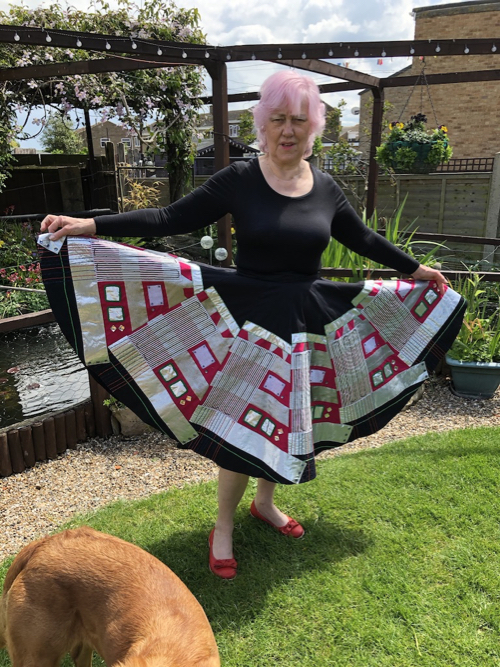
Again inspired by Kate Findlay the next project was based on images of the Large Hadron Collider, but instead of making a six feet diameter quilt I made it into a skirt.
The off-centre design of the 12 panels was a challenge and I went rather over the top with bling!
It's cotton poplin with all sorts of appliqued fabrics including curtain samples and scraps of silk fabric from TACK's sales table,
hand and machine embroidery and acrylic gemstones.
Through late summer and autumn 2021 I followed an online course with Fibre Arts Take Two.
Making Connections - Mark, Layer and Stitch was tutored by Cas Holmes
The course started with sketchbooks - encouraging us to use them every day, and ways of making improvised sketchbooks.
I have found that I prefer these; having fewer pages than commercially made ones they are less intimidating and fill up quicker.
The pages are a variety of papers and the covers of these three are failed acrylic paintings.
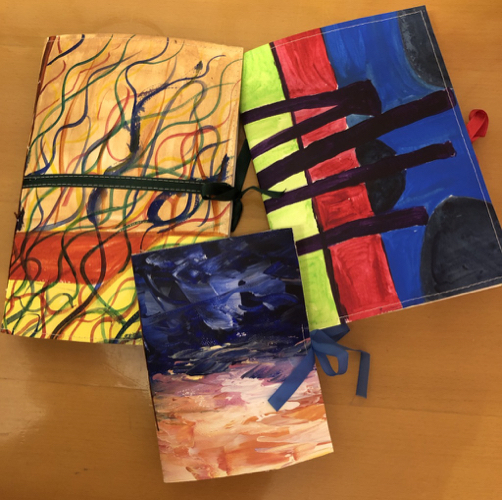
I also made a cloth holder for sketching equipment; everything needed for out and about and it is getting used quite a lot.
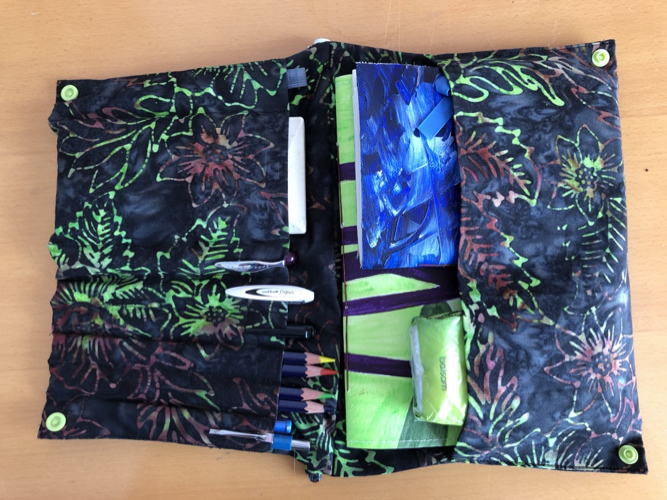 |
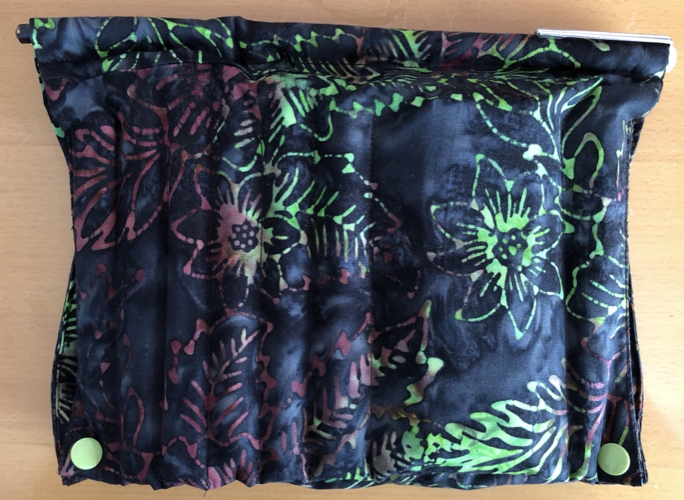 |
We then looked at the properties of various papers and cloth fabrics and explored different ways of making marks including monoprinting,
stamping, dyeing
and free machine stitching. Then putting it all together with layering and applique finished with hand and machine embroidery.
This course has shown me that I am more likely to create a successful piece of work if the subject or theme relates to something that I like or have good memories of.
It has also helped me to free up and to not be afraid of making mistakes.
I very much liked Cas's philosphy of using what is available and of reusing and recycling to give additional meaning to the work.
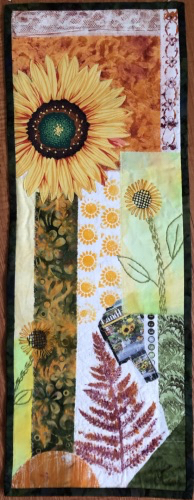 Sunflowers 1 Sunflowers 1 |
 |
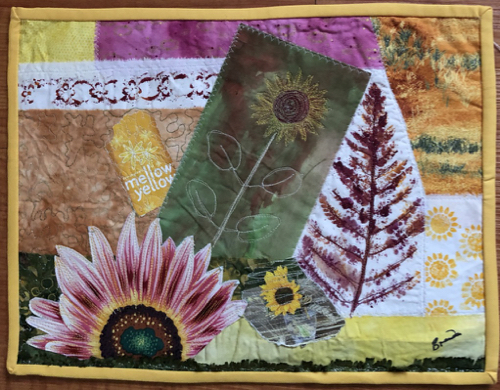 |
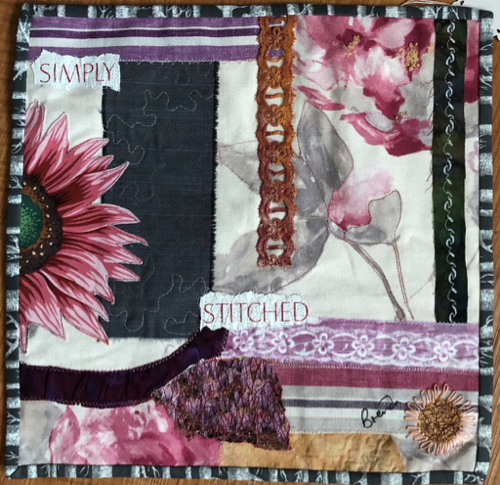 |
The first finished pieces from this course are a set of wallhangings based on the sunflowers which grew in our garden.
Very different from Cas's work and finished with traditional quilt binding but I was pleased with them.

My next successful completed piece is freer and of irregular shape. It's based on the recently erected standing stones near Eternal (Buckland) Lake at Cliffe.
Those stones are on the site of ancient sarcen stones which were removed several hundred years ago but rediscovered in the 1920s.
Like the originals the new stones are not local stone. They came from Yourkshire.
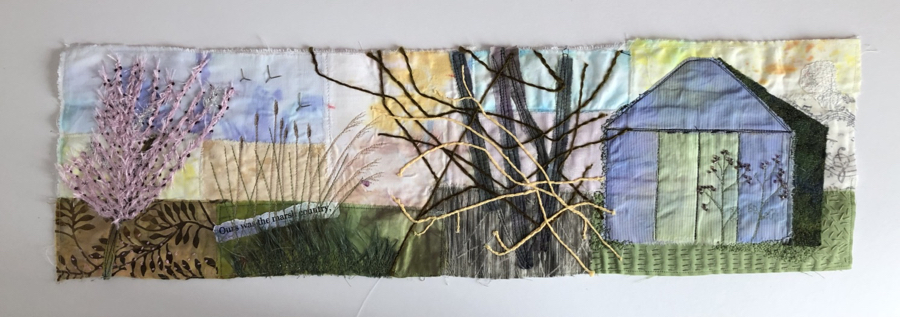
Towards the end of the course we were invited to submit a piece for the final online exhibition/e-book based on the things that were around us during lockdown.
This is my piece.
It includes the cherry tree from the earlier work, an old corrugated iron barn covered in vegetation, tangled scrubby hedges and the rushes and reeds of the marshland.
In summer 2022 the old barn was demolished to make way for five houses, a new barn has been erected on the other side of the village.
View the online end of course student exhibition
Through summer and 2022 I am following another online course with Fibre Arts Take Two.
Perfectly Imperfect tutored by Lorna Crane

We started with making our own brushes from a variety of found items. These are the first batch that I made.
 |
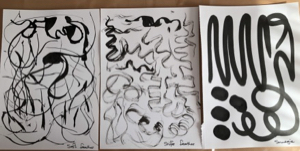 |
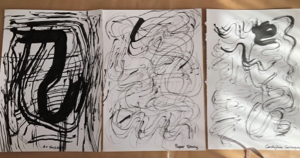 |
Ink marks on paper using the home made brushes. |
||
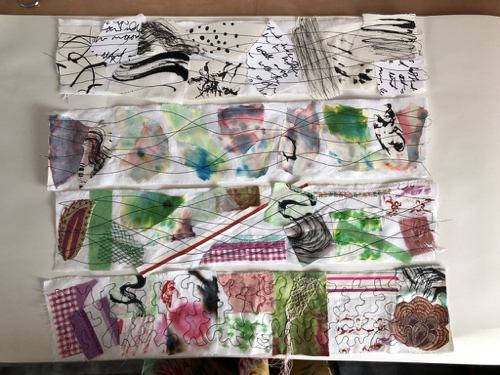
Then we moved into colour, and made various scrolls with pieces of marked paper and cloth attached.
 |
 |
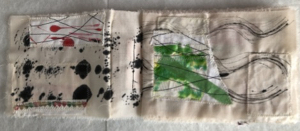 |
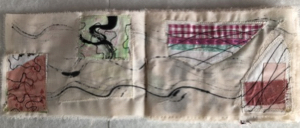 |
 |
 |
 |
 |
 |
 |
 |
 |
 |
 |
 |
 |
 |
Then the scrolls were cut apart and together with other pieces of marked paper and cloth, to make a variety of cloth books; reminders of the varous mark making techniques.
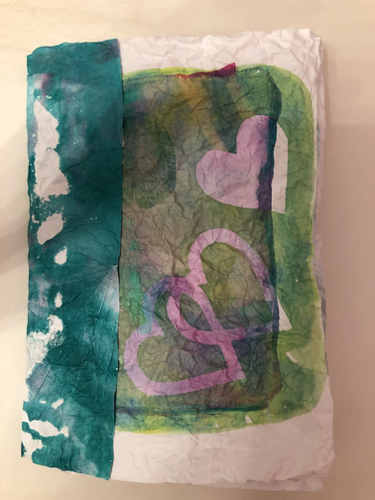 |
|
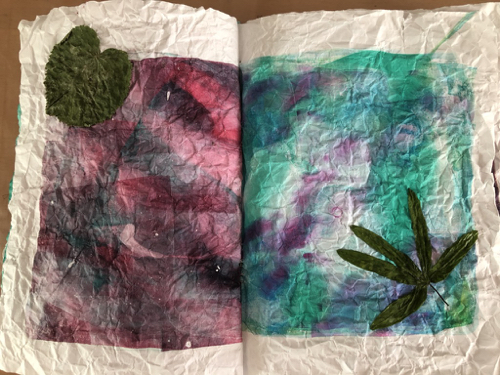 |
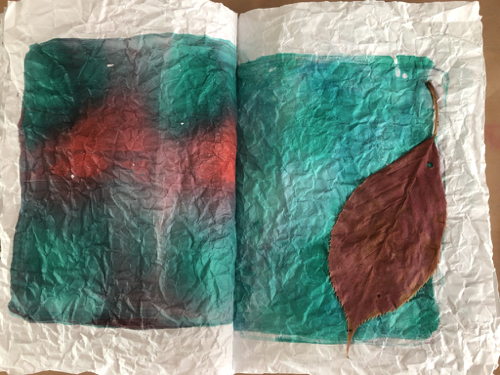 |
Then we did some momi-gami. I used gelli printed photocopy paper to make a book.
I have started to stick preserved leaves (coated with PVA solution) onto some of the pages,
but need to wait a few weeks when there should be more red coloured leaves around to complete it.
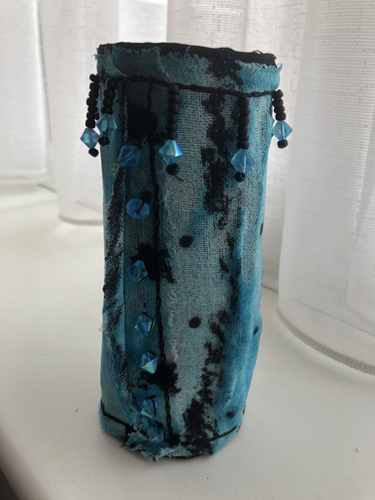 |
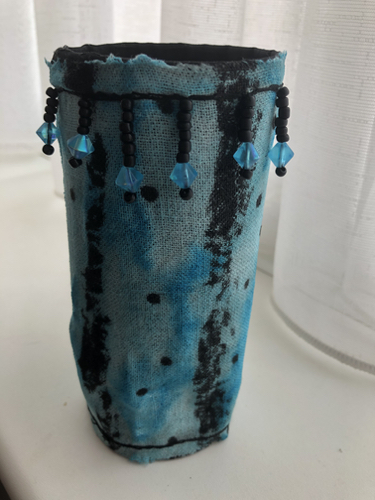 |
After that we moved on to making vessels using our hand painted fabrics.
It started as a nice cylinder shape made with plain black cotton stiffened with
heavyweight iron-on interfacing but gradually got wonkier.
I am trying to appreciate the wabi-sabi imperfection of it!
My 2022 Diary incorporating tequniques learned with Cas Holmes, Lorna Crane and Tara Axford.
This shield
was made in response to a theme in the new village art group; to draw/paint a famliy shield to represent our own interests.
Made entirely from bits and pieces from my stash.
18" x 17" 46cm x 44cm.

Clockwise from top left:
Black glossy vintage sewing machine collaged onto a piece of patchwork.
Pallette shape appliqued with bondaweb onto an old watercolour painting of lightning, the paint spots are acrylic and the brush is collaged card.
Knitting on cocktail sticks, shiny card shears and a lace bobbin shaped earring, all applied on top of strips of torchon lace which I made many years ago.
Magazine pages depicting a marriage ceremony, an old map and an old will for the background with 3D beadwork stitched on top to represent a single strand of DNA.